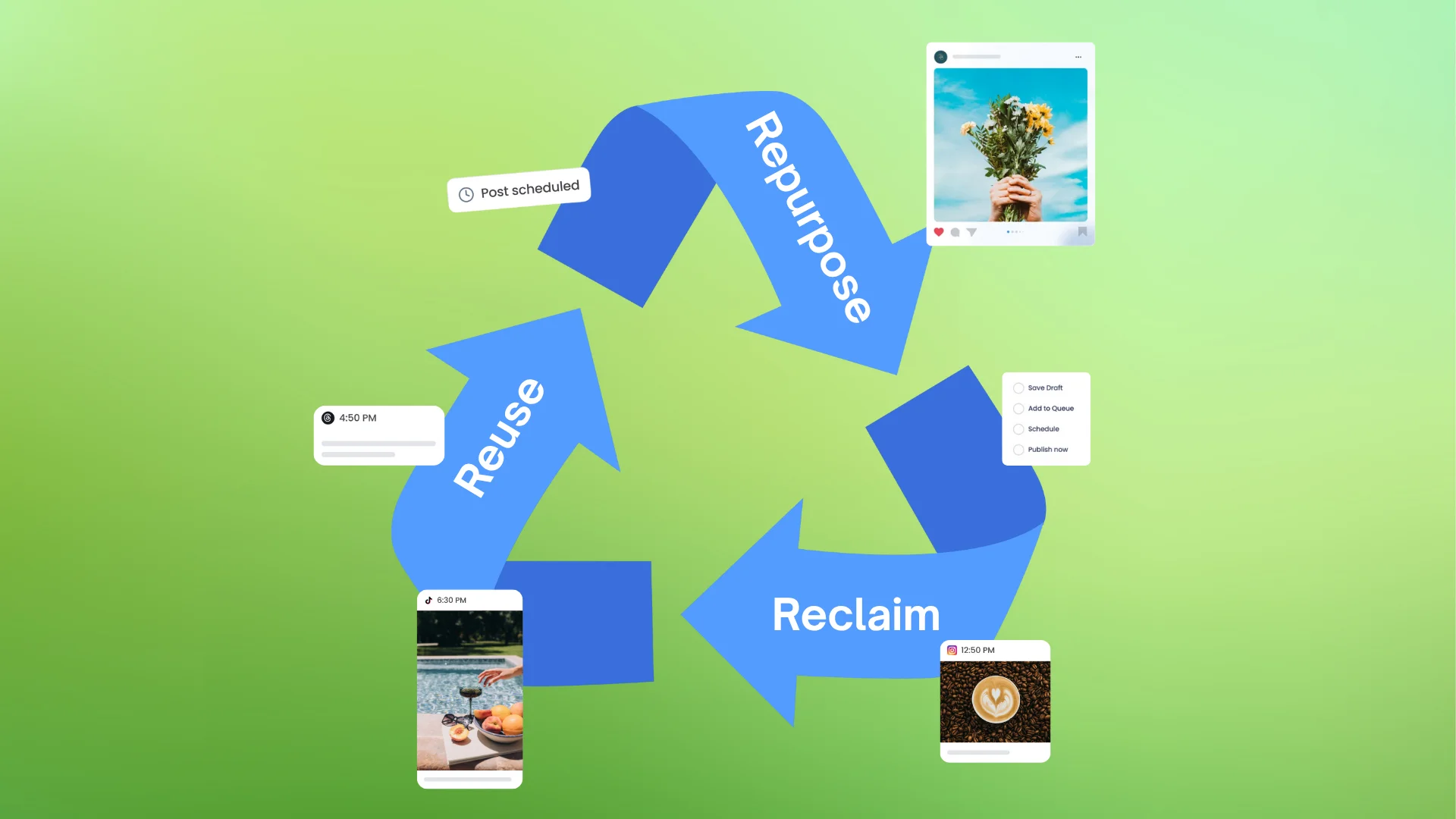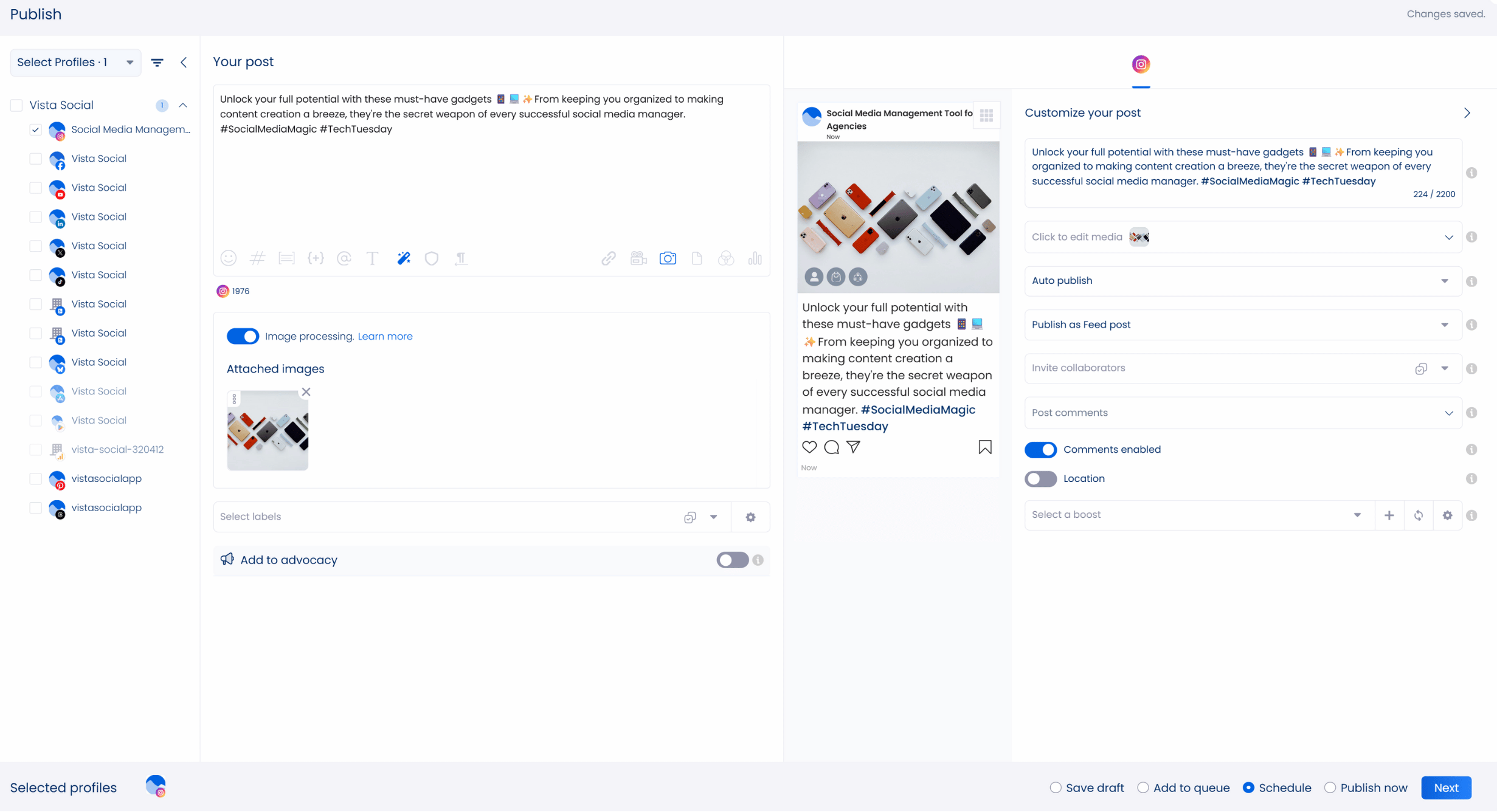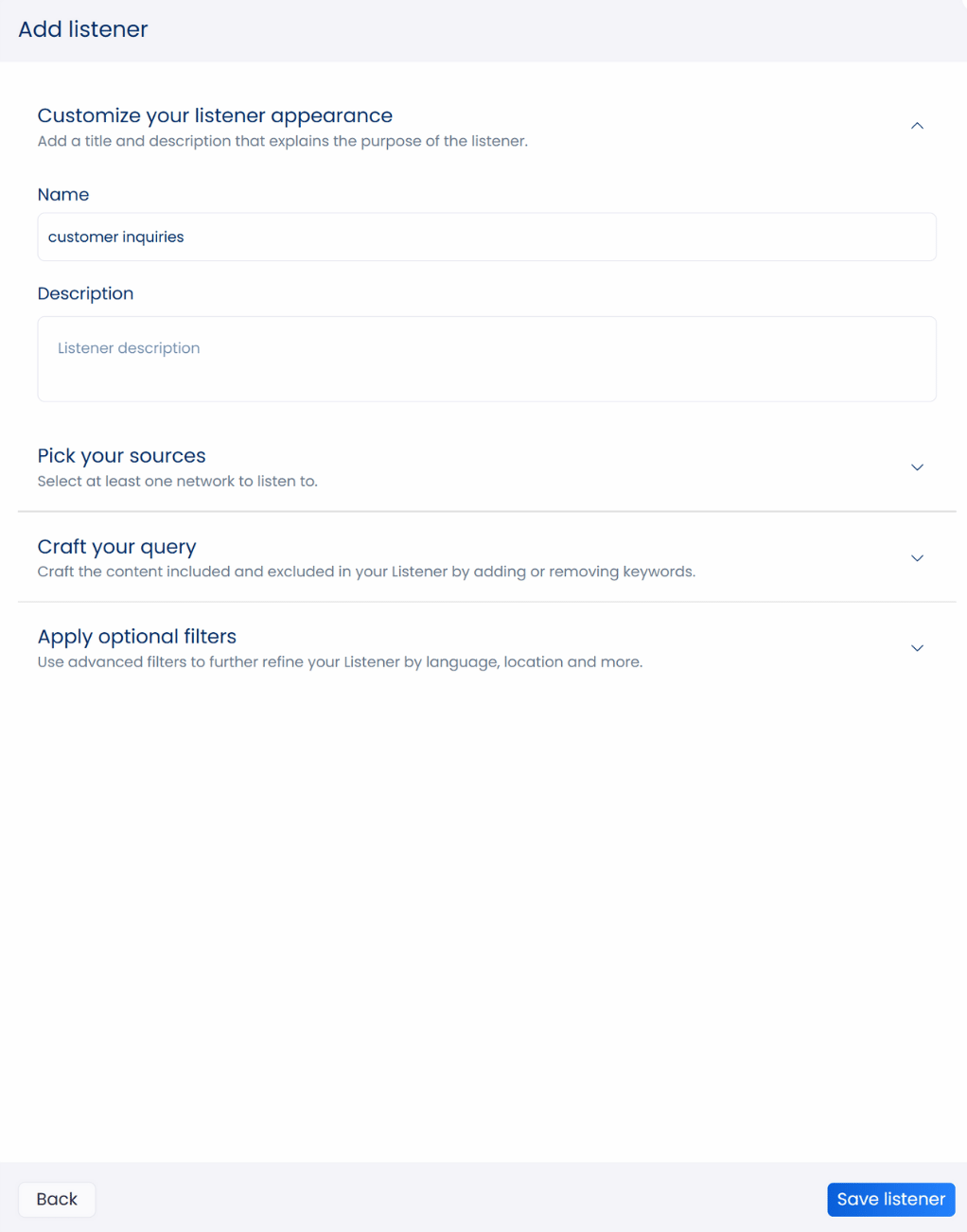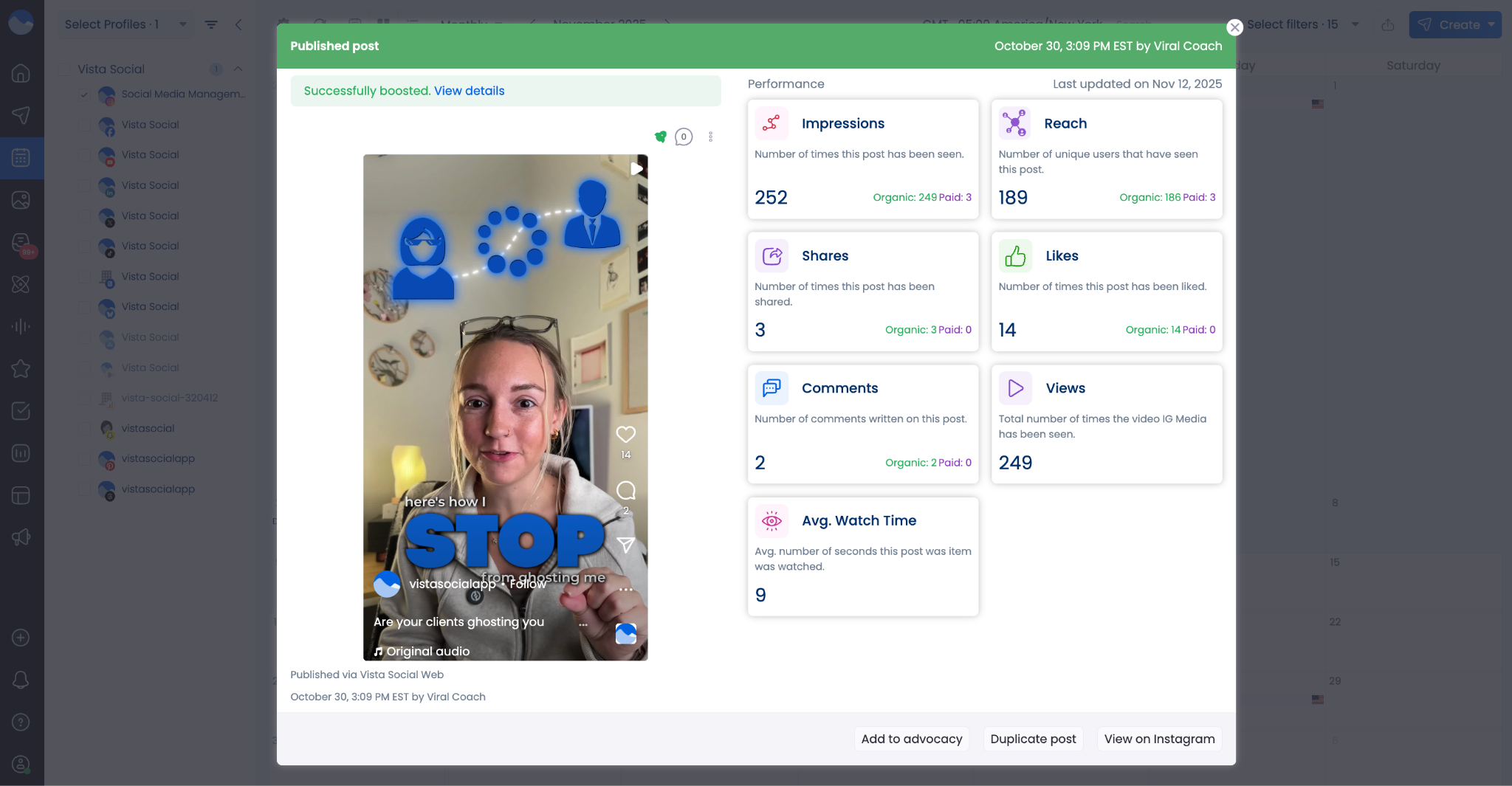New

Turn Your DMs Into Lead Gen!
Learn how to collect lead data from your DMs such as email addresses, phone numbers, and more right from your social inbox. If you are not yet automating your DMs your competitors are outpacing you.

How Something Social Saved 75% of Their Time and Increased Revenue by 15%
See how a fast-growing agency improved operations, cut down hours of manual work, and unlocked new revenue opportunities with Vista Social.
New

50 Unique Social Media Ideas for Consistent Content Creation
Discover 50 unique social media post ideas to engage your audience, grow your brand, and maintain a consistent content strategy with ease!

Mastering Content Reuse: The Key to a Consistent and Sustainable Posting Strategy
Published on August 14, 2024
8 min to read
A Guide to Church Social Media Management
Summarize with AI


Table of Content

Without the right strategies and tools, church social media management can feel like you’re preaching to an empty room. When posting feels random or rushed, it shows. The content starts to lose its heart, and followers drift away before your message can reach them.
Many churches face this challenge. Between planning events and guiding volunteers, it’s easy for social media to slip down the priority list. But with a little structure and the right approach, you can help your clients’ ministries build stronger relationships and share their stories with more people online. With a clear system in place, creating content that inspires and stays consistent becomes much easier.
That’s where this guide comes in. You’ll learn how to build a thoughtful social media plan that keeps your clients’ content consistent and true to their message. The goal is to help churches turn social media into a meaningful space that nurtures connection and strengthens faith online.
So, how do you make church social media management feel effortless while keeping engagement strong? This guide walks you through practical steps and tools to help your clients build an online community that truly thrives.
Table of contents
What is church social media management?
Church social media management is about developing and overseeing content across social networks to connect with the congregation online while helping your clients extend their church’s presence to new audiences and maintain a consistent message.
Social media management involves the following:
- Planning and scheduling your clients’ posts
- Engaging followers
- Replying to messages and comments
- Analyzing post and campaign performance metrics
Overall, social media management helps your clients’ churches share their message in a consistent way that strengthens relationships with their current members and opens the door for new people to get involved.
What are some church social media posts that you can use?
Getting the attention of your clients’ audiences starts with crafting posts that feel genuine and relatable..When the content sparks curiosity or emotion, people are far more likely to pause and respond. If you’re looking for inspiration, explore a few social media interaction post ideas. They are simple ways to encourage authentic conversations and build stronger engagement online.
The posts might include event updates or short reflections that make your clients’ presence feel warm and approachable. You can also share devotionals or community highlights that remind followers how their church continues to make an impact.
And if you ever need more direction, our guide on church social media posts that boost engagement shares practical examples you can easily adapt to help your clients connect more deeply with their online congregations.
What are the top church social media strategies in 2024?
Reaching your clients’ congregation and target audiences takes more than frequent posting. It requires thoughtful church social media strategies that bring purpose and consistency to every piece of content. You need a clear approach that helps guide your efforts and keeps every campaign aligned with your clients’ mission and goals.
When you focus on strategies that strengthen your clients’ message and encourage meaningful engagement, their online presence grows in both impact and trust. These church social media strategies help create steady interaction that keeps audiences active and invested in the ministry.
Your clients’ approach can make the difference between consistent growth and missed opportunities. Explore how the right church social media strategies can simplify planning while helping every post serve a clear purpose that supports long-term connection.
What are the tips for creating a church social media team structure?
A well-structured team is the foundation of effective church social media management. As your clients grow their digital outreach, an organized setup helps everyone stay focused on their shared goals. When team members understand their roles, communication improves and engagement with followers becomes more meaningful.
Your clients’ church social media teams should include designations for specific tasks. Some may handle content creation, while others focus on community interaction or performance tracking. This clarity helps staff and volunteers feel confident about their responsibilities and how their work supports the church’s mission.
A defined structure keeps workflows efficient and prevents unnecessary pressure on the team. It also helps projects run smoothly, ensuring deadlines are met without overwhelming anyone involved. Building a church social media team might seem like a big task, but with the right framework, it becomes both practical and rewarding.
For more ideas, check out our blog post on tips for creating a church social media team structure, where you’ll find examples of how to organize roles and encourage steady collaboration across your clients’ ministries.
What are the best social media management tools for churches?
Managing social media posts and profiles can feel overwhelming, especially when you’re balancing other responsibilities. The right platforms can keep your work organized and help you stay consistent without stretching your time too thin.
The key is to find social media management tools for churches that genuinely support your workflow. These tools help you plan content more efficiently and track how each post performs over time. You can also explore social media approval software to simplify post reviews and keep every update aligned with your clients’ tone and message.
When choosing tools, look for platforms that fit your clients’ communication style and long-term goals. Below, you’ll find several trusted options that help churches manage their online presence and maintain strong, lasting connections with their communities.
1. Vista Social
Vista Social is an all-in-one social media management platform built to make managing multiple profiles simple and stress-free. It’s designed to help you handle daily social tasks efficiently while keeping everything organized in one place.
The platform includes social media publishing features that let you create and schedule content with ease. You can tailor each post to fit your needs and check how it looks before publishing, and the platform also gives you a way to plan ahead so you never have to worry about manual uploads. This saves time each week and keeps your clients’ accounts active without needing constant attention.

Vista Social also supports your social media engagement and listening initiatives, helping you stay connected with your clients’ communities and track how people respond to their content.
The best part is that creating a listener is simple. Just give it a name, add a description explaining its purpose, select your sources and keywords, and you’re all set.

Its analytics tools give clear insights, making it easier to refine strategies and ensure every post drives your clients toward their goals. You can see impressions, likes, shares, views, and even the average watch time of your posts, along with other valuable metrics.

2. Mailjet
Mailjet is an email marketing platform that helps you create and send professional messages with ease. It’s ideal for clients who want to reach their congregation through newsletters or event updates that align with their social media efforts.
The platform supports collaboration and lets you add social content directly to emails. This helps churches keep their communication consistent and share important updates with their community in a way that feels personal and genuine.
Try Vista Social for Free
A social media management platform that actually helps you grow with easy-to-use content planning, scheduling, engagement and analytics tools.
Get Started Now3. StreamYard
StreamYard is a browser-based live streaming and recording platform that helps your clients reach more people online. It’s a great tool for broadcasting church services or special events directly to social media, allowing the congregation to stay connected from anywhere.
The platform keeps live streaming simple and flexible by letting your clients shape the experience in a way that fits their brand and helps them reach more viewers in a natural, seamless way.
4. Easil
Easil is a graphic design platform that helps your clients create high-quality social media visuals with minimal effort. Its simple drag-and-drop interface makes it easy to design posts that look polished and professional without needing advanced design skills.
The platform also supports brand consistency by letting you keep your visual identity elements in one place. For more options beyond Easil, explore our roundup of the best social media management tools for churches to find platforms that simplify every stage of content creation.
What are the elements of effective church social media management?
Helping your clients build a strong online presence for their church on social media goes beyond live streaming services and sharing updates. It also means creating a space where their community feels heard and valued.
Your clients need a strategic approach that blends inspiration with steady engagement. The right plan helps ensure their messages reach and resonate with their congregation and the broader online audience.
Uncover the key components of successful church social media management to help your clients connect deeply with their audiences and encourage consistent growth.
What are the common pitfalls of church social media management?
Managing a church’s social media page may seem easier than running a business account, but it still comes with its own challenges. Without a clear plan, it’s easy to lose focus or overlook important details that affect growth.
Some common pitfalls include inconsistent posting schedules or not having a defined strategy to guide your efforts. Neglecting to review performance data can also limit your ability to see what truly resonates with your audience.
Recognizing these challenges early helps you stay proactive and build a stronger, more effective presence for your clients on social media.
How can you streamline church social media management?
Effective church social media management is more than just saving time. It’s about extending the reach and deepening the impact of your clients’ ministries. By simplifying daily tasks, you create more room for creativity and meaningful engagement.
Implement the right strategies and use dependable tools to build an organized workflow that supports your clients’ goals. Integrating social media customer service tools helps manage conversations and feedback in one place, allowing your clients to respond quickly and maintain genuine connections with their communities.
Choose tools like Vista Social to manage essential social media tasks from one platform. It’s a smarter way to keep your clients’ pages running smoothly while staying true to their overall mission.
Create your Vista Social account now.
What are some frequently asked questions about church social media management?
Below are several commonly asked questions about managing a church’s social media accounts. These insights can help you guide your clients more effectively and address the challenges they face while building a stronger online presence. Each question focuses on helping churches communicate clearly and engage their congregation in meaningful ways.
Why is social media important for churches?
Social media gives churches a place to stay connected with their congregation and share messages that reach far beyond Sunday services. It helps ministries remain visible and accessible, even to people who might not attend in person.
Through regular interaction and timely updates, churches can deepen their relationship with the community and make it easier for people to stay connected to what’s going on. It’s a powerful way to build meaningful bonds and share faith in today’s digital world.
Social media platforms give you a space where people can come together and stay connected while you share updates or inspiration in the moment.
What social media platforms should churches use?
Churches should focus their social media efforts on the platforms where their congregation already spends the most time. This ensures posts reach people who are genuinely interested and ready to engage.
Generally, churches should focus their social media efforts on platforms where their congregation is most active.
The best platform will depend on each church’s audience and the type of content being shared. Some may find Facebook or Instagram more effective for community updates, while others might use YouTube or TikTok to share messages that reach a wider group online.
Should churches use paid social media ads?
Yes, if it aligns with the church’s goal of building stronger connections and reaching people who may not yet be part of the congregation. Paid campaigns can help spread awareness and draw attention to meaningful initiatives.
How many times a week should churches post social media content?
The ideal posting frequency depends on your clients’ audience and goals. What matters most is consistency and understanding when followers are most active online.
It depends on factors such as:
- The location of target audiences
- The specific social media platforms
- Your clients’ goals (boost engagement or grow their following)
Encourage your clients to post when their audiences are most responsive. Analytics tools can help identify ideal posting times and reveal what content performs best.
Social media management platforms like Vista Social let you schedule posts automatically and include data-backed suggestions for optimal posting times to maximize engagement.
Church social media management becomes far simpler when you use the right systems and strategies. With clear goals and reliable tools like Vista Social, your clients can build authentic relationships and keep their ministries thriving online.
About the Author
Content Writer
Jimmy Rodela is a social media and content marketing consultant with over 9 years of experience, with work appearing on sites such as Business.com, Yahoo, SEMRush, and SearchEnginePeople. He specializes in social media, content marketing, SaaS, small business strategy, marketing automation, and content development.
Read with AI
Save time reading this article using your favorite AI tool
Summarize with AI
Never Miss a Trend
Our newsletter is packed with the hottest posts and latest news in social media.

You have many things to do.
Let us help you with social media.
Use our free plan to build momentum for your social media presence.
Or skip ahead and try our paid plan to scale your social media efforts.
P.S. It will be a piece of cake 🍰 with Vista Social
Subscribe to our Newsletter!
To stay updated on the latest and greatest Social Media news. We promise not to spam you!


